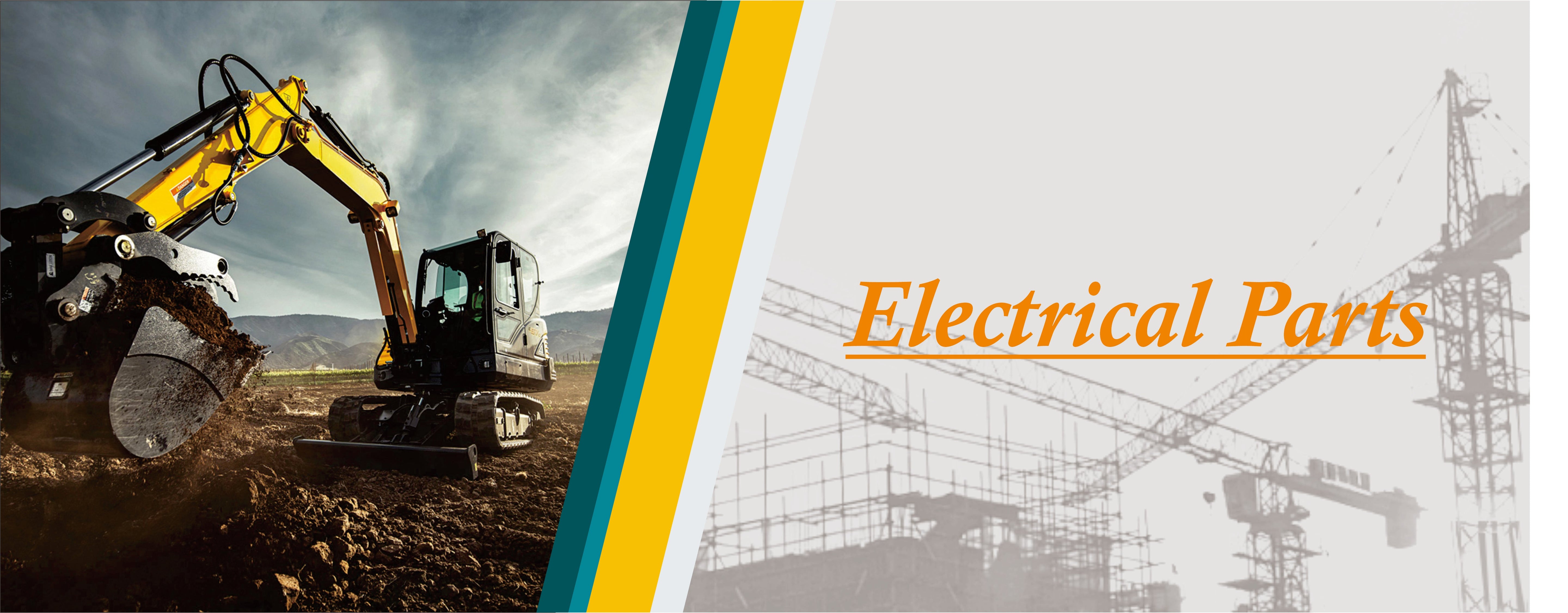Filter and sort
Electrical Parts

-

Vendor: Doosan
2PCS 2547-9038 Water Temperature Sensor For Doosan Excavator DH220-5 DH225-7 DH300-7
Regular price $ 36 -

Vendor: Caterpillar
161-9926 Heavy Duty SENSOR GP-PRESSURE For CAT CATERPILLAR 3406E 3412 3412C 3456
Regular price $ 68 -

Vendor: Caterpillar
131-0427 GP TEMPERATURE SENSOR FOR CATERPILLAR CAT 988G 938G 950G 1310427
Regular price $ 89 -


Vendor: Caterpillar
102-2240 1022240 GP Engine FueCoolant Temperature Temp Sensor For Heavy Duty CAT Caterpillar Excavator 320D 3406
Regular price $ 59 -

Vendor: Mitsubishi
10 PCS New ME088884 Water Temperature Sensor For Kato HD820 6D31 Excavator
Regular price $ 119 -

Vendor: Caterpillar
1 PCS New 111-3194 Water Temperature Sensor For CAT Excavator
Regular price $ 159 -


Vendor: Perkins
Water Temperature Sensor Switch 2848A129 for Perkins 1104D-44 1104D-44T 1104D-44TA 1104C-44 1104C-44T 1104C-44TA
Regular price $ 35 -

Vendor: Hyundai
Speed Sensor 21E3-0042 for Hyundai Excavator R140W-7 R170W-7 R200W-7
Regular price $ 45 -

Vendor: Caterpillar
Sensor Heavy Duty Excavator Temperature For Caterpillar CAT E320B E330C 342-2924
Regular price $ 15 -

Vendor: Caterpillar
Revolution Speed Sensor 4P5820 for Caterpillar Excavator CAT 330C 330D 336D 3116
Regular price $ 55 -


Vendor: Caterpillar
Revolution Speed Sensor 125-2966 For Caterpillar E320B E312B E320C 1252966
Regular price $ 32 -

Vendor: Hitachi
Pressure Switch Sensor 4333040 for Hitachi EX100-5 EX120-5 EX200-3 EX200-5 EX300-5 EX75US-5 ZX330 ZX450 ZX600
Regular price $ 22
What are the electrical parts?
The electrical system has three main functions. One is to power the starter motor through the battery, causing the starter motor to run and complete the initial stage of the stroke work through the crankshaft connecting rod structure, and exit the next working system after the engine is started, so this part is sometimes called the engine's The main component of the starting system is the starter motor; the second is to ensure the normal operation of the engine during work, ensuring normal oil supply, normal air intake, and starting protection devices when encountering high temperatures and high pressures. The main components include various sensors and switches. Third, during operation, the charger is driven by the engine to charge the battery and ensure that the battery is fully charged. The main component is the charger.
The electrical system can be classified according to the speed control system of the engine. The electrical system of the machine control is relatively simple, including only the starter, charger, and switch with sensor function. Of course, some assembly plants may have additional wiring in the control box of the unit. , a sensor is installed in the engine for control; in addition to the mechanical starter and charger, the ESC also has an electronic speed regulator and actuator; while the EFI/electronic control is more complex, and its main features are various There are many sensors and they are controlled by a computer board.
1. Battery
The battery is generally not a product that comes with the engine, but is selected, tested and matched by the assembler. The usual voltage is 12V or 24V, and its main function is to power the starter motor, ECM and other electrical equipment. Under normal circumstances, when the engine is running once, the battery is fully charged, because although the battery is discharged in the early stage, it will be fully charged again during the engine running process.
2. Starting motor
The essence of a starter motor is an electric motor. The principle is the magnetic effect of current, which generates a magnetic field through energization and promotes the rotation of the starter. The starter is installed on the side of the timing gear. When starting, the probe of the starter stretches out, contacts the timing gear box gear, and pushes the gear to rotate. After reaching a certain speed, usually 250-300 rpm, the probe It will retract. At this time, the engine can run normally and the work of the starter motor is completed.
An introduction to the main systems of the engine - Youjia
3. Charger
It is also called an alternator, so it is essentially a small generator based on the principle of electromagnetic induction. Driven by the engine, the coil cuts the magnetic induction lines to generate current and supplies it to the battery. The gear of the charger is connected to the crankshaft gear through a belt, and its power is also provided through the crankshaft. The charger is equivalent to a microcosm of a diesel generator set and usually includes excitation windings, etc. We will discuss this later when we introduce the electric ball.
An introduction to the main systems of the engine - Youjia
4. Sensors and switches
Sensors and switches are electrical devices and serve a similar purpose. Sensors and switches feedback information to the computer board or controller through signals, so that the computer board or controller can perform corresponding actions according to the corresponding program. The difference is that the sensor generates pulse signals and transmits information to the control center continuously, while the switch has a threshold, and it is energized only when it exceeds or falls below the threshold and feeds back to the control center. Sensors usually include temperature sensors, pressure sensors, rotational speed sensors, etc., and switches are mainly temperature switches and pressure switches.














